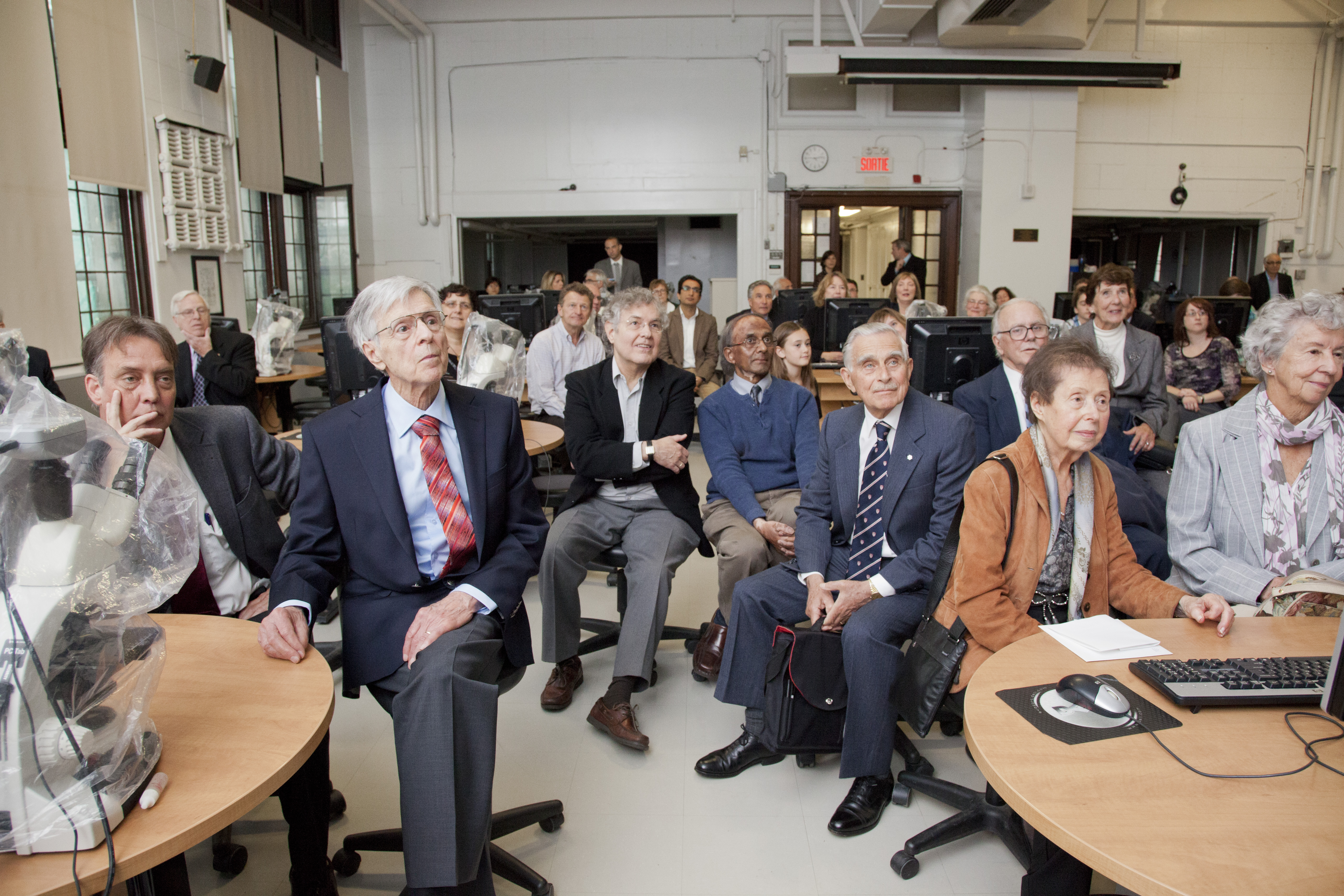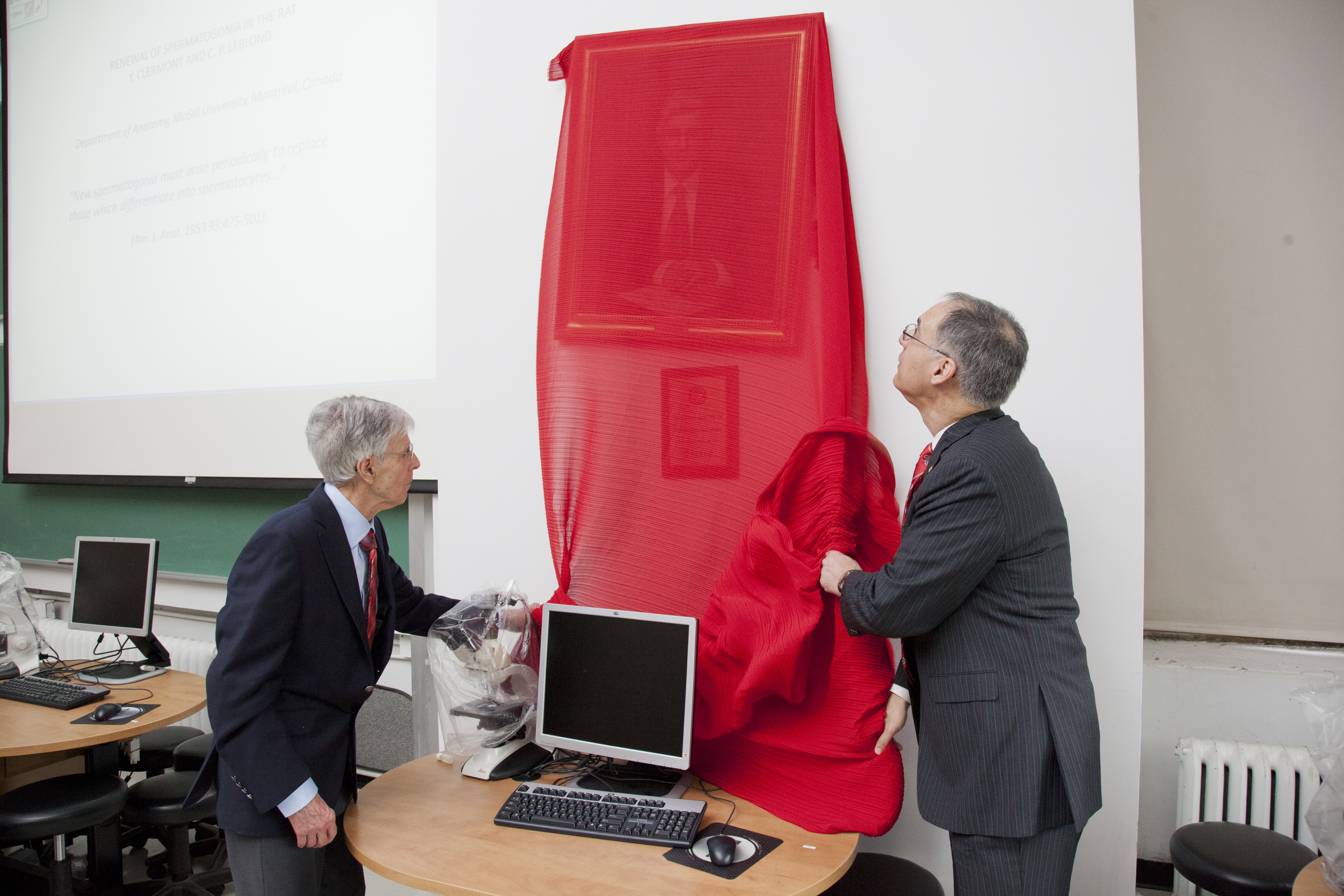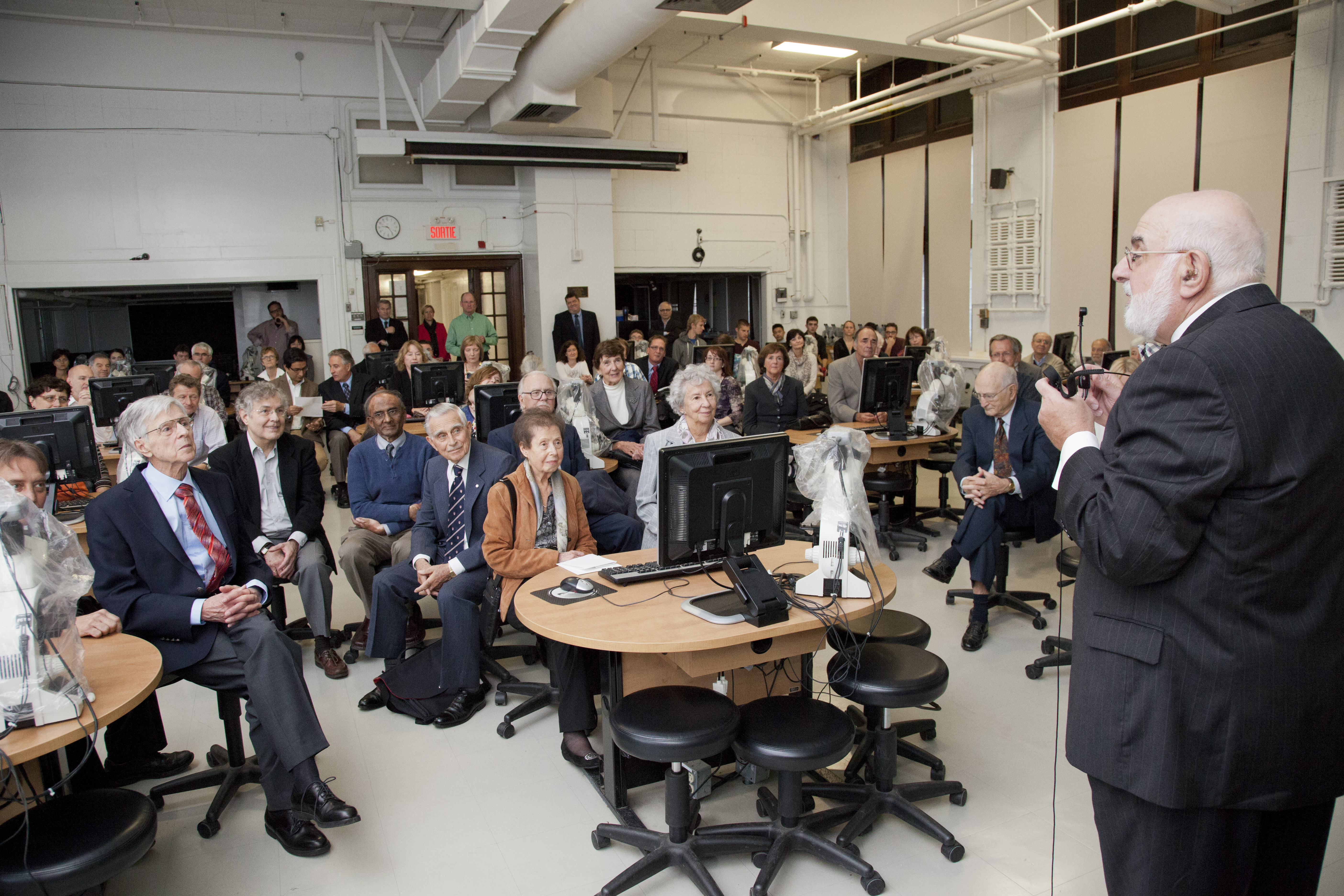The year 1953 was an exceptional year for science. In the same year that Watson and Crick identified the double helix as the structure of DNA, Drs. C.P. Leblond and Yves Clermont of McGill University published their own seminal paper that first identified the stem cell renewal theory.
Sixty years after the landmark discovery, Dr. Clermont was honoured by McGill on October 18, 2013, as the histology laboratory located in the Strathcona Anatomy and Dentistry building was renamed in his honour. A fitting tribute, the newly renamed Dr. Yves Clermont Histology Lab is the same place where Dr. Clermont spent decades as an educator, sharing his knowledge, passion and inspiration with countless McGill students.
During the dedication ceremony, Dr. David Eidelman, Vice-Principal (Health Affairs) and Dean of the Faculty of Medicine, shared personal anecdotes of his own time spent in the lab learning from Dr. Clermont. With Dr. Clermont at his side, the Dean unveiled a beautiful portrait and plaque to commemorate an educator who was greatly appreciated by his students for his dedication, passion, work ethic and for the enthusiasm with which he imbued them. Dr. Clermont’s family, former colleagues and students, alumni and current students had the opportunity to share in the celebration and to explore the impressive hand drawn images made by Dr. Clermont that adorn the walls of the lab.
From the past to the future in stem cell research
 Following the ceremony honouring Dr. Yves Clermont, a true pioneer in the field of stem cell research, it was fitting that Professor Janet Rossant from SickKids and the University of Toronto – a world-renowned stem cell researcher in her own right – be featured as the guest lecturer in the most recent installment of the Andrew F. Holmes Dean of Medicine Distinction Lecture series.
Following the ceremony honouring Dr. Yves Clermont, a true pioneer in the field of stem cell research, it was fitting that Professor Janet Rossant from SickKids and the University of Toronto – a world-renowned stem cell researcher in her own right – be featured as the guest lecturer in the most recent installment of the Andrew F. Holmes Dean of Medicine Distinction Lecture series.
Speaking to a packed audience in the C.P. Leblond Amphitheatre in McGill’s Strathcona Anatomy and Dentistry building, Professor Rossant provided a fascinating overview on the evolution of stem cell research since 1953 and a glimpse of where it is headed. She noted how stem cells could supply replacement cells for multiple degenerative diseases and traumatic injuries, but cautioned that for stem cell therapy to work we need an endless supply of safe and stable stem cells. The cells must have the ability to make all specialized stem cell types while avoiding immune rejection and clinical protocols to get the cells to the right location, to survive and to function.
Much work remains to be done
According to Professor Rossant, pluripotent stem cells – those that have the capacity to develop into various types of cells – offer the most potential. While they have been derived from mice, in humans the great question was whether we could effectively derive similar cells beyond at the embryonic stage.
This challenge of deriving pluripotent human cells beyond the embryonic stage was led by John Gurdon and Shinya Yamamanaka, who ushered in a new frontier in human stem cell research with the advent of induced pluripotent stem cells (iPS) – pluripotent cells that are artificially derived from non-pluripotent cells. As opposed to embryonic stem cells, iPS cells can be derived from adult cells and can minimize the likelihood of rejection.
Speaking to the research interests in her own lab, Professor Rossant highlighted the work that her team is undertaking in relation to developing new treatments to combat Cystic Fibrosis. Specifically they are looking at whether they can develop therapeutic potential by deriving iPS cells from patients with the disease in order to help alleviate the lack of donors and risk of rejection associated with the traditional means of treating Cystic Fibrosis – lung transplantation.
Professor Rossant’s lecture can be viewed in its entirety here.
Naming of Dr. Yves Clermont Histology Lab – October 18 (Photos: Nicolas Morin)

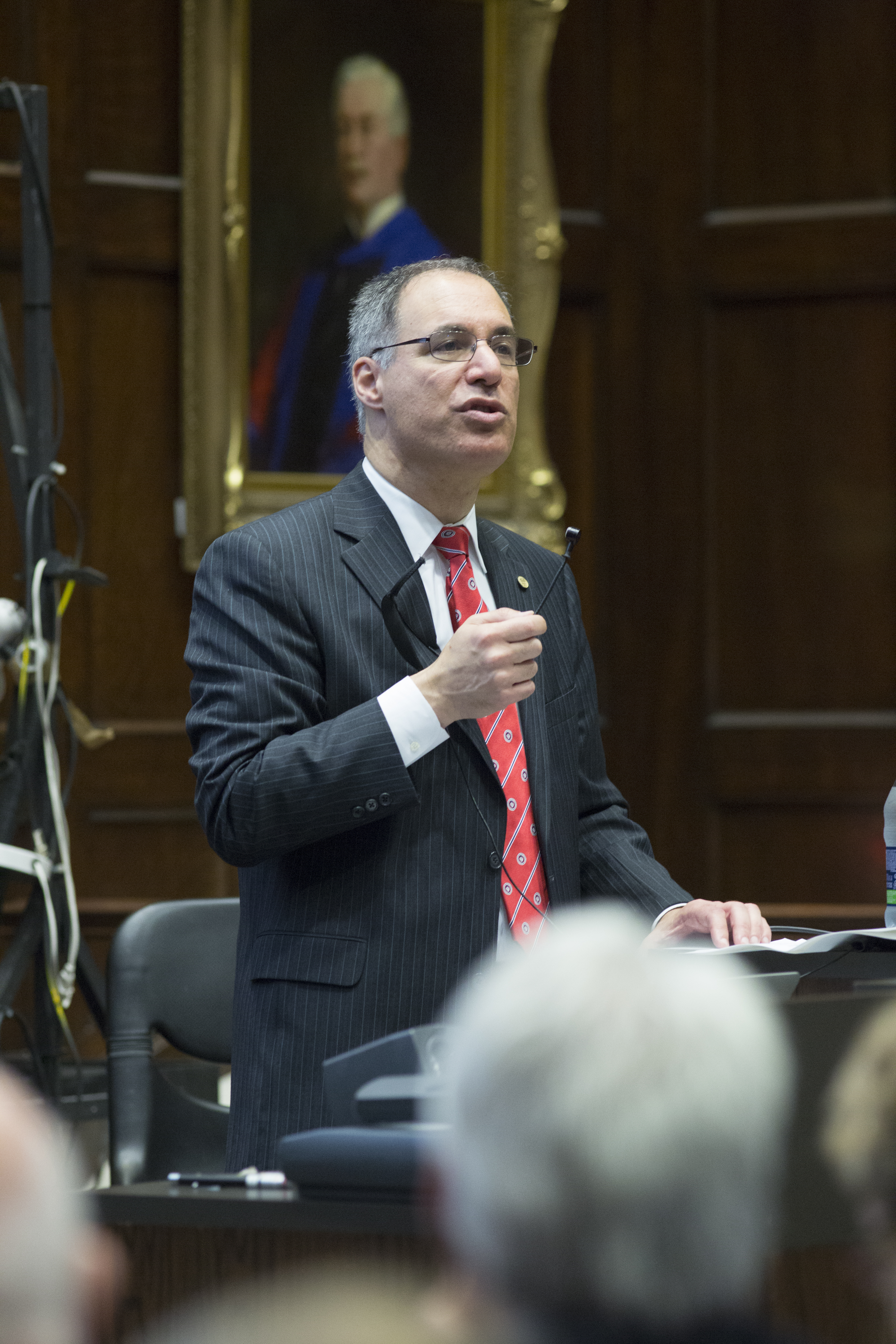
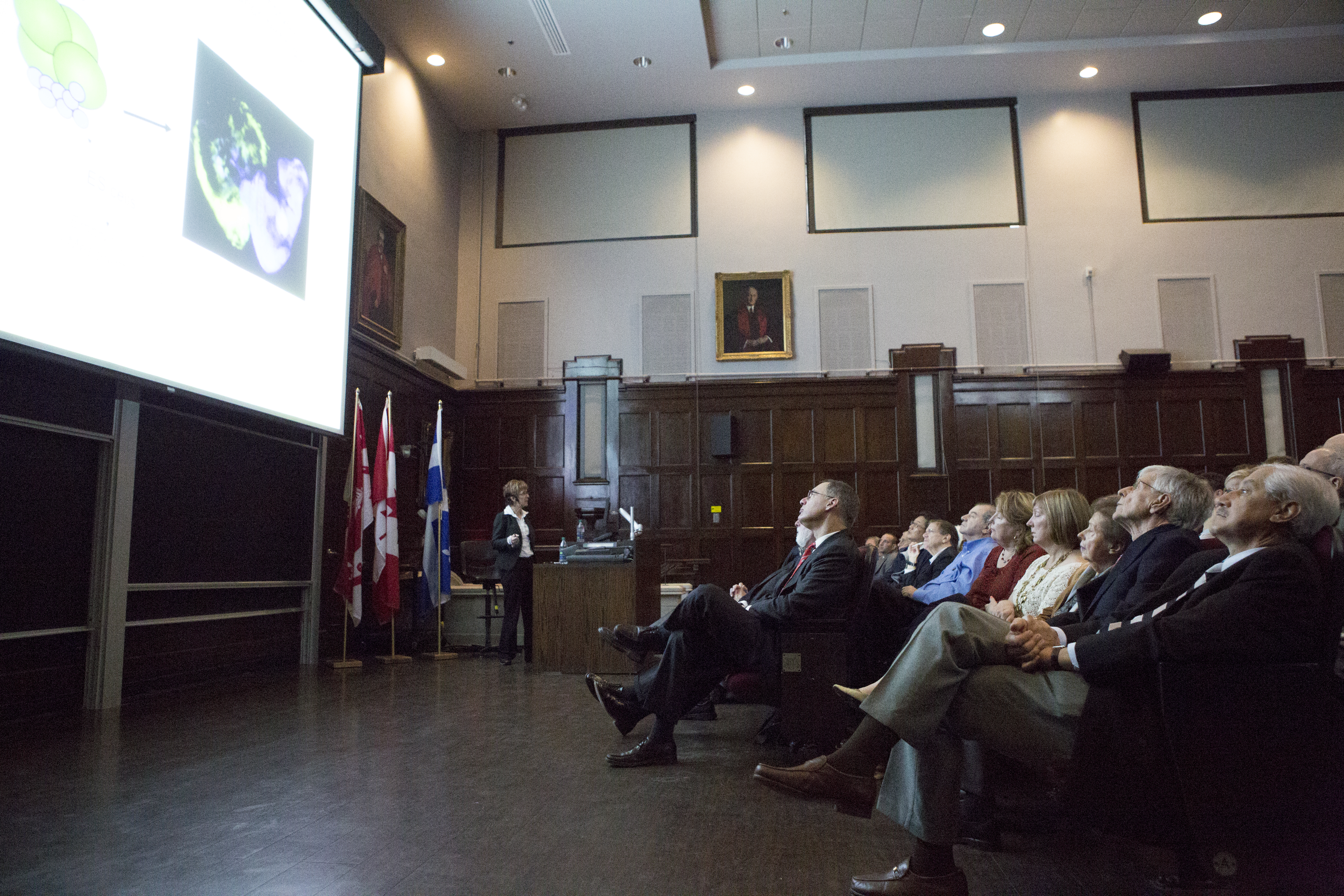
October 20, 2013

